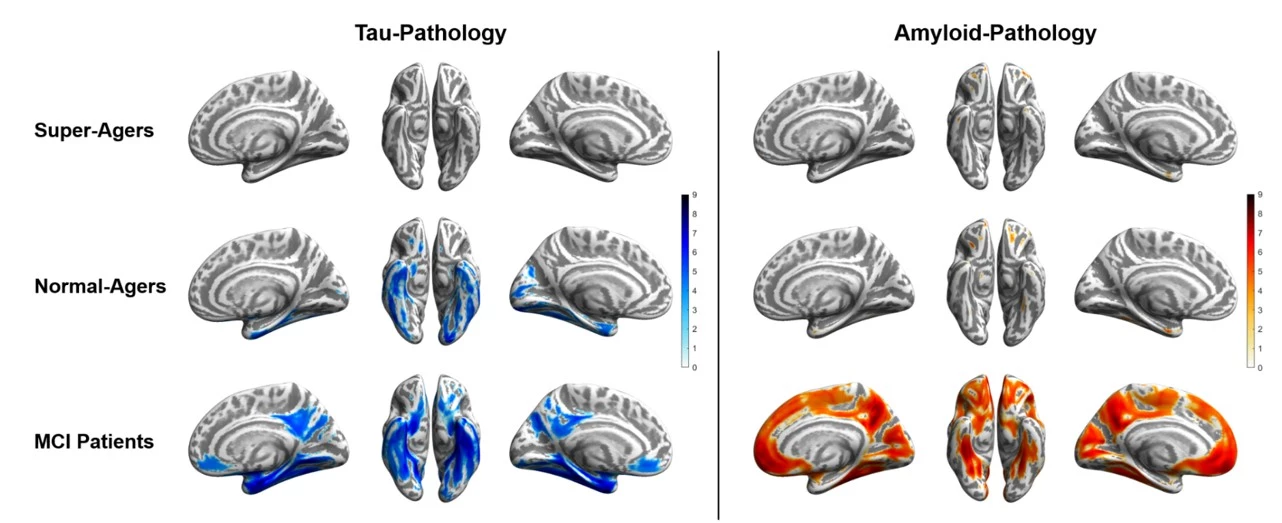New research is illustrating the differences in toxic protein accumulations in the brains of older subjects suffering cognitive decline compared to older subjects with unexpectedly strong cognitive abilities. An image compiled from PET scans of these so-called “super-agers” has won Image of the Year from the Society of Nuclear Medicine and Molecular Imaging.
“The phenomenon of super-aging suggests that cognitively high-functioning individuals have extraordinary mechanisms that resist brain aging processes and neurodegeneration,” explains Merle Hoenig, from Research Center Juelich & University Hospital Cologne in Germany.
Current research suggests aggregations of two particular proteins – amyloid and tau – are primarily responsible for the neurodegeneration associated with dementia and age-related cognitive decline. The new imaging study has, for the first time, compared amyloid and tau burdens across three age and education matched cohorts.
The research collected imaging data from three groups of subjects, all over 80 years old: 25 subjects with mild cognitive impairment (MCI), 25 average cognitively healthy subjects, and 25 so-called “super-agers”.
Super-agers are a recently defined category of octogenarians who display exceptional mental or physical capabilities, with age-related biomarkers often resembling those seen in much younger counterparts.

The imaging results show the amyloid and tau burden in super-agers resembled what is seen in the brain scans of much younger subjects. Interestingly, the research adds weight to a growing hypothesis suggesting increasing aggregations of tau are the most effective pathological sign of cognitive decline, compared to the more commonly studied amyloid aggregations.
Hoenig says the super-agers seem to have significantly lower burdens of tau pathology compared to the normal and MCI cohorts. This suggests a resistance to tau accumulations could be a key reason why super-agers maintain high cognitive functioning at advanced ages.
“While super-agers may be able to resist aging-associated proteinopathies, in particular tau pathology, normal-agers may not and are thus exposed to inevitable cognitive decline due to the accumulation of neurotoxic tau tangles and the advancing aging process,” adds Hoenig. “Moving further to the other extreme of aging, namely mild cognitive impairment, the synergistic effects of both amyloid and tau may accelerate the pathological aging process.”
Every year the Society of Nuclear Medicine and Molecular Imaging (SNMMI) selects one notable image that illustrates an exemplary use of imaging technology. This year, selected from over 2000 abstracts submitted to the society’s Annual Meeting, the Image of the Year award was given to the compelling visualization of PET data shown above, which highlights the clear amyloid and tau differences between three different cohorts of octogenarians.
“Our cognition reflects who we are as individuals,” says Umar Mahmood, chair of the SNMMI’s Scientific Program Committee. “As we age, most of us lose some of that ability. The Image of the Year provides us with insight into how we can use these PET imaging biomarkers to understand behaviors and therapies that may allow more of us age better and retain more of our cognitive abilities as we get older.”
Source: SNMMI




